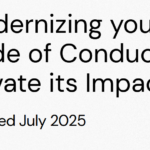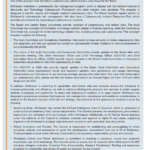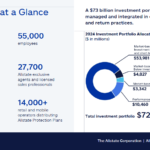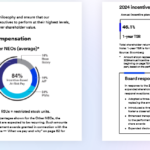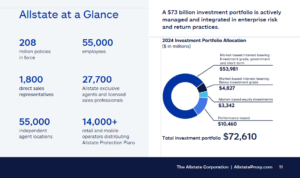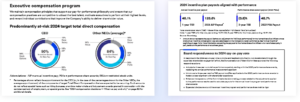This is an incredible piece from Labrador. Chock full of practical guidance about the external pressures that companies are feeling today when drafting their disclosures related to DEI. And as always, providing useful examples of what companies have done recently.
Here is an excerpt about “Considerations for Drafting Disclosures Right Now”:
1. What to call the policies and initiatives formerly known as DEI:
– As noted below, based on the changes made in filings so far this year, many companies are removing references to diversity or DEI and are moving to inclusion and/or belonging.
– Where discussion of diversity remains, it is usually limited to “diverse populations,” “diversity of perspectives, background, or experience [and skills, in the case of directors],” or workforce metrics (linked to EEO‑1 categories), rather than an overarching principle like DEI.
– The focus has shifted to overall corporate culture and fairness, as well as workforce and talent development, which may include employee engagement.
2. DEI disclosures have become more cautious:
– U.S. companies are likely to continue some or all of their existing programs and still make progress across many sustainability areas, though we have observed that many are choosing to alter how (and if) they disclose it in their reporting.
– Many/most companies will remove DEI‑related goals, especially anything that might be perceived as a quota. To the extent that they are non‑numeric goals, companies can absorb the discussion into the narrative discussion of other HCM‑related topics.
– Many companies will be more careful in how DEI‑related achievements and progress are disclosed, if at all; infographics highlighting DEI‑related topics are likely to decrease across reporting and replaced with more narrative to allow for increased explanatory context around such topics.
– Previous DEI‑specific sections of reports will likely be removed (or renamed) with components of these discussions embedded in other HCM sections.
4. Investors still want to understand the meaning and impact of sustainability‑related risks and opportunities; therefore, as reports scale back or become more data‑driven, the need to provide context and effectively communicate the big picture becomes even more important.
5. As always, companies should anchor their discussions in how HCM programs (including DEI, of any name) support overall corporate strategy. Similarly, demonstrating how these programs drive value creation remains increasingly important this year (that is, explaining why we are doing what we are doing and how it is good for our business).
6. Stakeholders, as well as raters and rankers, will likely pay attention to the deletion of information and draw their own conclusions. From a ratings standpoint, companies can anticipate that their scores will be impacted due to the absence of information – while this should not be outcome determinative for most, this will create increased visibility for other stakeholders and require pre‑emptive explanation for boards of directors and executive teams so that they are not caught by surprise.
Customers, employees, certain investors, and even suppliers may question a company’s reversal of its commitments, leading to reputational damage due to a loss of trust in the company, its business practices, and its disclosures. Transparency may help to mitigate risk. One recently published sustainability report directly addressed such changes in its message from the CEO and as part of the introductory overview of sustainability approach.







